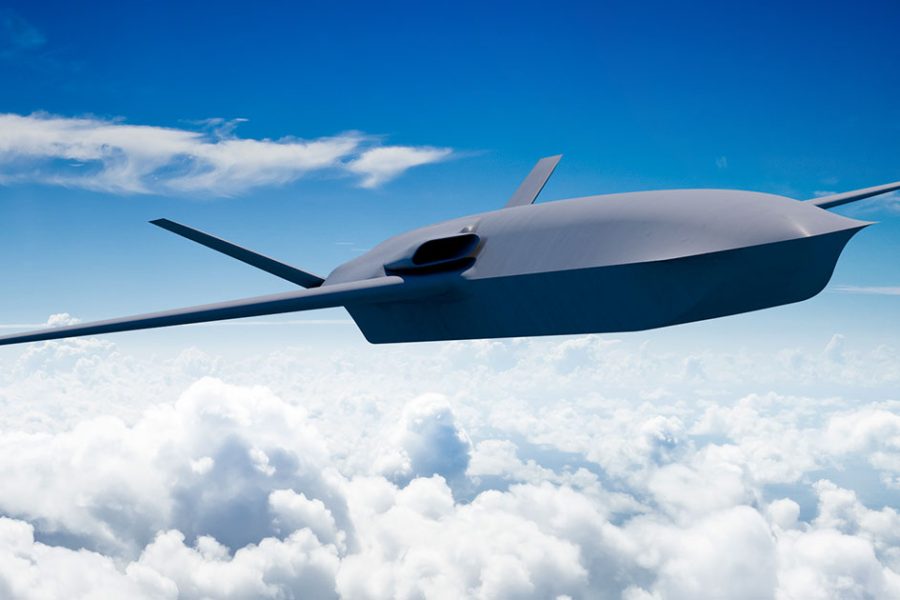The Air Force’s Collaborative Combat Aircraft program, which will pair unmanned drones with manned platforms, is the start of a paradigm shift in the U.S. military’s thinking about the use of uncrewed and autonomous aircraft, beginning for the first time to place them at the core of the service’s missions, according to David Alexander, president of General Atomics Aeronautical Systems.
“If you look at what the Air Force is doing with the Collaborative Combat Aircraft program, and embracing uncrewed mass numbers for air-to-air combat, that’s a first,” he said at a Hudson Institute event on March 26, “To me that’s the big shift that we’re seeing right now.”
For two decades the Air Force has relied on remotely piloted aircraft (RPA or drones) for “over the horizon ISR [and] strike” missions, and in that context has come to see them as central rather than peripheral.
But though drones like the MQ-1 Gray Eagle and MQ-9 Reaper have for years had the capability to fire air-to-air and air-to-ground missiles, the use case in ground attack or air combat “never caught on because that’s always been seen as a manned aircraft mission,” Alexander said.
All of that is changing now as Air Force Secretary Frank Kendall and the service have reached a tipping point, he said. Through Kendall’s advocacy for CCA and other uncrewed programs, he “has really moved the bar on that … in a big way. And that’s huge,” Alexander said. “I think it’ll go down in history as the time that it was truly embraced.”
General Atomics is one of five companies that have received contracts for the CCA program thus far. The service is planning to pick two or three to proceed in the next few months.
The embrace of autonomy hadn’t yet extended to attritable swarms, noted event co-moderator and Hudson senior fellow Bryan Clark, pointing out that the first tranche or increment of the CCA “is shaping up to be a pretty expensive airplane.”
Alexander responded that was partly because the aircraft needed be useable in different scenarios. The tyranny of distance in the vast Pacific theater meant they must have the range for long flights from distant permanent bases “as needed.” But they also had to be suitable for deployment in agile combat operations where they will be taking off from temporary bases on “island hopping” missions.
“I think you have to do both,” he said, and without requiring air-to-air refueling. “I’ve seen some concepts where you’ve got these collaborative combat aircraft sipping off of [airborne] tanks. I can’t think of any worse Keystone Cop idea out there, you have hundreds of these little things, trying to take fuel when the important, bigger fighters behind them really need to get on those hoses.”
Moving towards swarm operations, Alexander said General Atomics was developing what he called “a large small” aircraft, air-launched with a weight of about 200 pounds, which allows for a 40-pound payload and a kilowatt of power. “That’s the sweet spot,” he said.
“It could be huge,” he said of the impact of the aircraft, noting that in Ukraine, it would enable penetration of the Russians’ Integrated Air Defense System, or IADS, without precipitating a massive expansion of the conflict. “Yeah, we could penetrate IADS with the F-35, right? And then we’ve got World War III. Now if they’re in there with a bunch of smalls, [the enemy] is gonna shoot some down, but if you launch them, some with exquisite decoy electronic warfare in them, combined with [some equipped with] warheads and you don’t know which one is which. If you had that at scale, it’d be very a big deal right now.”
The war in Ukraine has also shown the effectiveness of uncrewed systems at sea. Alexander said he believed the U.S. Navy was also adopting a central role for uncrewed aircraft, at least in some mission sets where they offered unique surveillance and sensor management capabilities in the maritime domain. “The big blue water, long persistence, it’s a natural fit. I think it’s the next frontier for Medium Altitude Long Endurance aircraft,” he said, predicting that the next generation MQ-9B Sea Guardian, which had payload packages including sonar buoy distribution and sonar buoy management, would see Navy duties as soon as next year.
